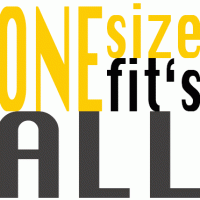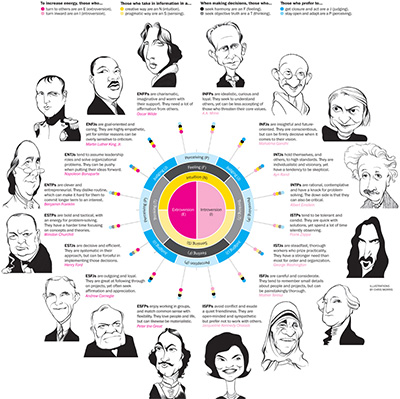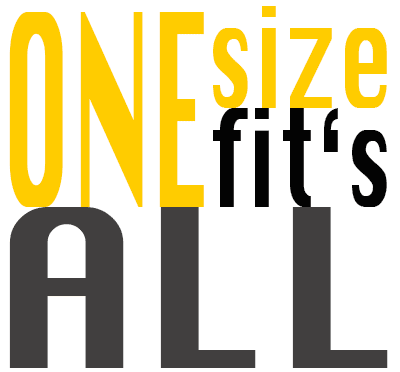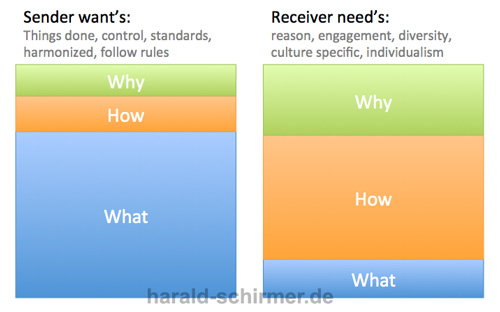 The second part of my thoughts about a modern change management approach is about values and the typical way in big company (or government) to roll out changes: „One size fit’s all“.
The second part of my thoughts about a modern change management approach is about values and the typical way in big company (or government) to roll out changes: „One size fit’s all“.
In my experience today we are able to engage an individual change approach – of course we need a network of supporters for that, extremely open and fast, direct communication and a load of „TRUST“. The results on the other side are beyond everything we know from the past. But let’s start with the values as a foundation:
(if you missed the first part, i suggest to start here: A new change management concept … I will add more and more pieces)
If you want change, you need to work with „values“
Our believes and values drive behavior – don’t expect a behavior change from people seeing the highest value in continuity („we always did it that way“, „never change a running system“).
What drives our Values?
Interesting example of Liam Ryan (we are more than rational robots) about rational and emotional reasons for behavior change:
There is a lot more to learn about values – my experience of creating, rolling out and measuring a training workshop for about 155.000 employees in 50 countries gave me great lessons learned not only about workshop concepts, different cultures, various „education levels“, relevance in daily life, cost and gathering feedback in a dynamic environment…
we have so many things in common, but are very different too! (Which I call: the richness of diversity – and see as the valuable base for our future)
Personalities are so different
I would like to put people in two main groups, when it comes to their decision process (or reactions) on any changes – one part is acting on, what they know, what has been proven, is written in books or knowledge from school or university. The other part is more on the „emotional“ side, they want things to be fair, right, ok – judging on their „gut feeling. Still for both it is very important from whom, when and how they get a message.
We need to understand, which of our values we can „address“ in a „logic driven“ way and which ones are more on the „emotional“ side of the scale. Also (as MBTI tells us) the individuals demand a different approach to engage a change.
I really recommend taking a couple minutes reading through the different personalities which are described in the MBTI: (here in very brief form)
(I) introversion – extroversion (E)
(S) sensing – intuition (N)
(F) feeling – thinking (T)
(J) judging – perceiving (P)
Check out this great infographic from „the philosophical boy„:

IMPACT:
To get an idea how big the differences are of e.g. introverts and extroverts (which seems to be the best to be nowadays) – watch this great TED video about the „Value of being an introvert“
I also found this very interesting: the connection of MBTI to career (which I see very similar to self driven changes within a job) e.g. for finding your Change Agent Network
Knowing about the different personalities, you can find and address the right ones to help you in every change phase as ambassadors, coaches, „quality gates“ or endurance keepers. > building a winning team
Using the job functions you will find typically specific personalities doing those jobs > Quality, Controlling, Development, Production, Leading… you need a different approach for those groups!
Now you might ask: „Are you stupid? – How can we have an individual approach in a global environment with thousands or even millions of people?“ – I think this is the challenge of modern change management – and YES WE CAN – Social tools and the transparent sharing culture gives us the options to involve such many people, modern technology (and yes there is still improvement needed) – can consolidate, rate, evaluate, weight and summarize this (in combination with human brains, please – I’m not confident being forced to trust a human logic programmed into a machine, yet)
In the end, it does not matter, if we want people to be more sustainable, accepting each others religion, culture or believes or rolling out a new software in a company – it all comes down to the same required processes.
„One size fits all“ … in a global environment?
If a government or a global company plans a change, it typically starts Top-Down – following the hierarchy. We see a someone building a strategy, ideally with a project setup and a team. Without Business Networking, the team tried to find some individuals, speaking for major markets to ensure a functional setup. In the whole change project the roll out was the first thing, which really „hit“ the global organization.

To be very concrete:
- Wouldn’t it be a bit short sighted to beliefe, a small e.g. german organizational team can come up with the best roll out scenario for e.g. China?
- Second why to believe, that colleagues in other regions like Brasil, US or India would than do things the same way?
Many times, we don’t even know,
what works best to change things in our own culture
(and here we know a lot about other changes in history,
the people, their needs, roots and believes)
Respecting Cultures, Leading Change and Social Business:
With Social Business, we now have the great opportunity to ask and involve virtually „everyone“ in the planning and following actions. The typical fear of getting too many answers, or feeling forced into a bottom-up decision, can be addressed with good expectation management and clear leadership / management principles.
- Involvement can start right in the beginning.
- Finding regional or even local supporters who have great knowledge about their own culture AND who are passionate about the change topic
- Every country could have it’s own, individual approach (this can be cascaded down even more)
- Measuring success can be flexible and based on the „trust“ level – reduced to a minimum (not the numbers are important*, but the impact!)
- Target group and time oriented communication is reaching far more people (in their local language and cultural way) …change communication will be one of the next articles 😉
- Feedback, comments, likes or „silence“ gives a great indicator of your change progress
- You have a perfect change documentation and lessons learned collection for future changes (use tagging to combine and add relevance to important statements)
- This transparency builds trust in your change team, into themselves and will build an „embracing change“ culture over time (the more positive experienced changes – where people felt asked and respected, the easier it will be in the future)
*Leaders typically ask for numbers, because this is a proven way to judge progress > but this is only needed, once the progress (impact) itself is not visible enough. With a transparent environment as it is provided by Social Business, we might be able to focus more on the actions, than wasting our energy in too much reporting 😉
Here is the video of our „local GUIDEs“, when we started our „Change Adoption Phase“ – I am sure you will experience a different „spirit“ and engagement level as in typical Kick-Off meetings:
Pushing or winning over?
Further more I would like to remind on the way we approach our Change Agents, supporter team or the target group. Ideally we are not pushing to „convince“ with our own „world-view“ but trying hard to learn more about the others „picture“ of THEIR world, to find ways winning them over by a shared vision/goal – that is a great place to start… now the only problem is …“they“ are quite many.
My recommendation would be (and I know myself how hard that is) to
spend a lot of time for „asking“, „listening“
and be sure to „respect“ everything you hear
…before even thinking of transmitting your own message 😉
We can save a lot of effort, be a lot more successful and efficient, once we know our target group, „where they are“, how „relevant“ our topic is for them and not to forget – how much resources they have left to deal with our change plans.
As you could see in the video of the GUIDEs above, even in the workshops (which they created themselves) we have seen a great variety of ideas, methods and actions – making those very personal with high impact – all focused on the big „WHY“
Steps to change success:
(first ideas – of course not complete)
1. Invite everyone to join (don’t be afraid of to many)
2. Give a clear VISION (ideally develop it together!)
3. Build a collaborative main Strategy
4. Hand over responsibility to local „change agents“
5. Communicate! (questions, success stories, options, problems, results)
6. Engage, Appreciate, Cheer, Like, Comment, Share, Celebrate
I referred to this earlier in my Sender (Transmitter) / Receiver Article where I explained my experience of communication, handing over responsibility, gaining trust and getting results:

End part II:
Again, this text is a collection of thoughts, I would like to share, to engage a discussion on it. I am sure, we have to „update“ leading change as we know it (it is a great base) – new tools and possibilities give us great opportunities to do so. Thank you very much already for the great feedback to the first article – I am looking forward to your response to this one!

Schreibe einen Kommentar